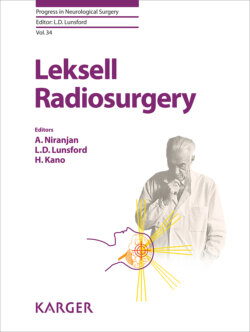Читать книгу Leksell Radiosurgery - Группа авторов - Страница 84
На сайте Литреса книга снята с продажи.
Abstract
ОглавлениеThe ICON® Gamma Knife treatment unit is a modification of the Perfexion unit with the addition of a frameless-based treatment option and stereotactic cone-beam computed tomography (CBCT). The addition of infrared markers for the detection of patient motion and the use of a stereotactic CBCT revolutionizes how Gamma Knife procedures can be performed. A review of the basic medical physics concepts of the Gamma Knife unit is given. This includes a description of the cobalt-60 (60Co) sources and discussion of the interactions of gamma rays with matter, the dosimetric principles of 60Co, radiation protection principles, unit construction, absolute dose rate and relative output factor determination, radiologic focal point definition, and quality assurance needed to maintain proper functionality of the Gamma Knife unit. The new additions of the high-definition motion management and the stereotactic CBCT are discussed. A review of treatment planning metrics is given.
© 2019 S. Karger AG, Basel
The basic physics of the Gamma Knife has not changed substantially since the device’s conception. The device uses cobalt-60 (60Co) as a radiation source. As described in more detail in this chapter, during the 60Co decay, energetic gamma rays are emitted. It is the gamma radiation that is used clinically in the Gamma Knife and contributes to the naming of the device.
60Co is artificially produced when stable 59Co absorbs a neutron. The excess energy from the acquired neutron decays through beta decay. The process of beta decay involves converting a neutron into three particles: a proton, electron, and antineutrino. There are two main beta decay channels which emit electrons with energies of 0.31 and 1.48 MeV. These electrons are absorbed within the source housing of the Gamma Knife and do not contribute a significant dose to the patient. The excited state of 60Ni are where the gamma rays originate from the beta decay of 60Co. The gamma rays used for stereotactic radiosurgery are emitted with energies of 1.1732 and 1.3325 MeV, and the mean energy is around 1.25 MeV. 60Co decays with a half-life of 5.26 years, meaning that one half of the initial activity is present after 5.26 years, resulting in a doubling of the treatment time.
Gamma rays are photons originating from the nucleus. A two-step process occurs; the photon interacts with a medium to transfer its energy to electrons, and in turn these electrons deposit their energy through interactions in the tissue that cause biologic damage. Photons can travel infinitely in a medium by continually transferring energy to the electrons. A measurable property is the percentage depth dose which is a relation of the maximum dose to doses at depths. For 60Co this maximum dose occurs at a depth of 5 mm in water. At 5- and 10-cm depths the 60Co gamma rays attenuate to approximately 74 and 50% of the maximum dose. The importance of this can be visualized as such: if two sources of radiation are parallel opposed to one another, the dose at a depth of 5 mm is higher than the dose at the center.
